
In the year 306, Constantine The Great was proclaimed Emperor in York after his father, Julius Ceaser died in Eboracum (modern York) and became the first Roman emperor to profess Christianity. He initiated the conversion of the empire into a Christian state and also inspired a distinctively Christian culture that laid the foundations for the growth of Byzantine and Western medieval civilisation.
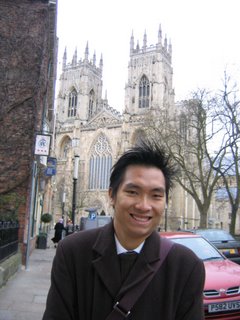
York Minster in the background. Walked in and walked out. Didnt want to pay the entrance fees.. hehe... Anyway, after the withdrawal of Roman forces in Britain and during the Pagan invasion, Christianity somewhat dissapeared in the community. However, "in 625 Christianity returned to York when Bishop Paulinus accompanied Ethelburga, a Christian princess from Kent in southern England, who came north to marry Edwin, the pagan king of Northumbria. Edwin accepted Christianity two years later and was baptised, along with his court, by Paulinus in a church built especially for the occasion - this building is traditionally regarded as the first York Minster." (www.yorkminster.com) However, through the centuries, the church was destroyed and rebuilt. A Cathedral replaced it but it too was destroyed by the Danes. It's remains can still be viewed in the exhibition in the Minster. Construction of the Minster as we know it began in the year 1220. It was decided that they would rebuild the Norman Minster on a scale to rival Canterbury. The rebuilding of York Minster that began with the transepts went on almost continuously for two hundred and fifty years.

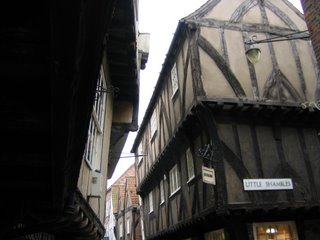
"The Shambles is often called Europe's best preserved medieval street...The Shambles has the effect of a time machine, transporting you back to the Elizabethan period. The houses that jostle for space along The Shambles project out over the lane in their upper stories, as if trying to meet their neighbours opposite." (www.britainexpress.com)
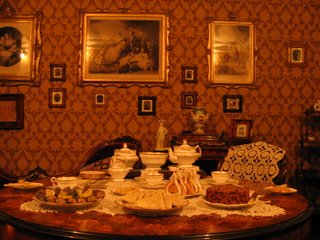
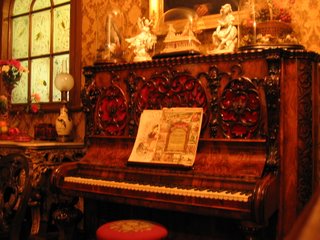
The Castle Museum really had very interesting exhibits. The above is a recreated parlour in the home of a middle class family back in the 1870s (Victorian style). Practically everything is richly patterned...

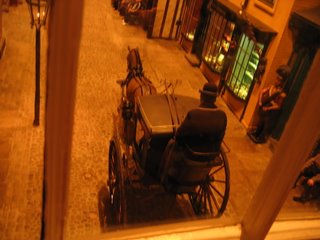
Kirkgate, the oldest recreated Victorian street in Britain. You can wonder through the cobbled street in the museum itself. The sound system was amazing and the lights were dimmed every once in awhile to give you a feel of how it felt being on Kirkgate at night.

Inside the stagecoach garage on Kirkgate.

Tea shop...
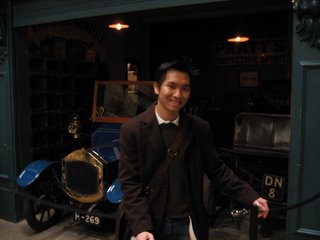
At a garage on Half Moon Court. This is another street recreated from the Edwardian era (1901 - 1910). It was built in the half moon shaped part of the original prison yard.

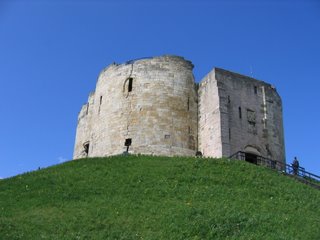
Clifford's Tower. Erected by William the Conqueror in his bid to overthrow the North. However, in 1190, "the Jews of York sought refuge there after being attacked by a local mob. They were given the choice of being either baptised or killed, but they took a third option and committed mass suicide. At this time the tower was built of timber and so burned to the ground. It was rebuilt in stone." (www.cliffordtower.com)
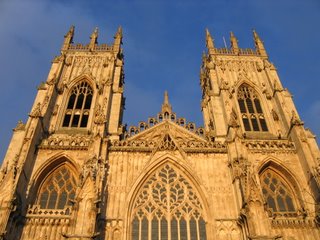
York Minster...
 In the year 306, Constantine The Great was proclaimed Emperor in York after his father, Julius Ceaser died in Eboracum (modern York) and became the first Roman emperor to profess Christianity. He initiated the conversion of the empire into a Christian state and also inspired a distinctively Christian culture that laid the foundations for the growth of Byzantine and Western medieval civilisation.
In the year 306, Constantine The Great was proclaimed Emperor in York after his father, Julius Ceaser died in Eboracum (modern York) and became the first Roman emperor to profess Christianity. He initiated the conversion of the empire into a Christian state and also inspired a distinctively Christian culture that laid the foundations for the growth of Byzantine and Western medieval civilisation.  York Minster in the background. Walked in and walked out. Didnt want to pay the entrance fees.. hehe... Anyway, after the withdrawal of Roman forces in Britain and during the Pagan invasion, Christianity somewhat dissapeared in the community. However, "in 625 Christianity returned to York when Bishop Paulinus accompanied Ethelburga, a Christian princess from Kent in southern England, who came north to marry Edwin, the pagan king of Northumbria. Edwin accepted Christianity two years later and was baptised, along with his court, by Paulinus in a church built especially for the occasion - this building is traditionally regarded as the first York Minster." (www.yorkminster.com) However, through the centuries, the church was destroyed and rebuilt. A Cathedral replaced it but it too was destroyed by the Danes. It's remains can still be viewed in the exhibition in the Minster. Construction of the Minster as we know it began in the year 1220. It was decided that they would rebuild the Norman Minster on a scale to rival Canterbury. The rebuilding of York Minster that began with the transepts went on almost continuously for two hundred and fifty years.
York Minster in the background. Walked in and walked out. Didnt want to pay the entrance fees.. hehe... Anyway, after the withdrawal of Roman forces in Britain and during the Pagan invasion, Christianity somewhat dissapeared in the community. However, "in 625 Christianity returned to York when Bishop Paulinus accompanied Ethelburga, a Christian princess from Kent in southern England, who came north to marry Edwin, the pagan king of Northumbria. Edwin accepted Christianity two years later and was baptised, along with his court, by Paulinus in a church built especially for the occasion - this building is traditionally regarded as the first York Minster." (www.yorkminster.com) However, through the centuries, the church was destroyed and rebuilt. A Cathedral replaced it but it too was destroyed by the Danes. It's remains can still be viewed in the exhibition in the Minster. Construction of the Minster as we know it began in the year 1220. It was decided that they would rebuild the Norman Minster on a scale to rival Canterbury. The rebuilding of York Minster that began with the transepts went on almost continuously for two hundred and fifty years.
 "The Shambles is often called Europe's best preserved medieval street...The Shambles has the effect of a time machine, transporting you back to the Elizabethan period. The houses that jostle for space along The Shambles project out over the lane in their upper stories, as if trying to meet their neighbours opposite." (www.britainexpress.com)
"The Shambles is often called Europe's best preserved medieval street...The Shambles has the effect of a time machine, transporting you back to the Elizabethan period. The houses that jostle for space along The Shambles project out over the lane in their upper stories, as if trying to meet their neighbours opposite." (www.britainexpress.com)
 The Castle Museum really had very interesting exhibits. The above is a recreated parlour in the home of a middle class family back in the 1870s (Victorian style). Practically everything is richly patterned...
The Castle Museum really had very interesting exhibits. The above is a recreated parlour in the home of a middle class family back in the 1870s (Victorian style). Practically everything is richly patterned... 
 Kirkgate, the oldest recreated Victorian street in Britain. You can wonder through the cobbled street in the museum itself. The sound system was amazing and the lights were dimmed every once in awhile to give you a feel of how it felt being on Kirkgate at night.
Kirkgate, the oldest recreated Victorian street in Britain. You can wonder through the cobbled street in the museum itself. The sound system was amazing and the lights were dimmed every once in awhile to give you a feel of how it felt being on Kirkgate at night.  Inside the stagecoach garage on Kirkgate.
Inside the stagecoach garage on Kirkgate. Tea shop...
Tea shop... At a garage on Half Moon Court. This is another street recreated from the Edwardian era (1901 - 1910). It was built in the half moon shaped part of the original prison yard.
At a garage on Half Moon Court. This is another street recreated from the Edwardian era (1901 - 1910). It was built in the half moon shaped part of the original prison yard. 
 Clifford's Tower. Erected by William the Conqueror in his bid to overthrow the North. However, in 1190, "the Jews of York sought refuge there after being attacked by a local mob. They were given the choice of being either baptised or killed, but they took a third option and committed mass suicide. At this time the tower was built of timber and so burned to the ground. It was rebuilt in stone." (www.cliffordtower.com)
Clifford's Tower. Erected by William the Conqueror in his bid to overthrow the North. However, in 1190, "the Jews of York sought refuge there after being attacked by a local mob. They were given the choice of being either baptised or killed, but they took a third option and committed mass suicide. At this time the tower was built of timber and so burned to the ground. It was rebuilt in stone." (www.cliffordtower.com) York Minster...
York Minster...
No comments:
Post a Comment